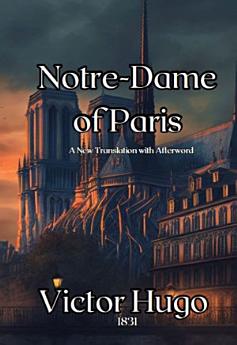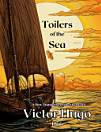Notre-Dame of Paris
About this ebook
From the moment of its publication in 1831, Notre-Dame of Paris was both a popular and critical triumph. Readers in France (and soon across Europe) were enthralled by Hugo’s depiction of 15th-century Paris and the poignant figure of Quasimodo, the cathedral’s bell-ringer, with his misshapen body and gentle heart. In English-speaking countries the book became known as The Hunchback of Notre-Dame, a title that emphasized its most memorable character and helped propel the novel to international fame. The public’s response was so impassioned that it sparked something remarkable: a newfound appreciation for Gothic architecture. Paris’s actual Notre-Dame Cathedral, long neglected after the French Revolution, suddenly became a symbol worth saving. Hugo’s novel effectively shamed the city into restoring its medieval monuments – a fact often credited as the book’s greatest real-world influence. By the 1840s, a major renovation of Notre-Dame was underway, driven in part by the public sentiment Hugo had stirred.
On one level, Notre-Dame of Paris is a gripping romantic thriller: a pure-hearted beauty caught between the adoration of a monster and the lust of a zealot, moving toward a fate as inexorable as a tolling bell. On another level, Hugo uses this story to explore grand ideas. He contrasts medieval faith with the dawn of modern skepticism, the permanence of stone with the fragility of human lives. “This will kill that,” he famously writes – suggesting that the printed book (knowledge, progress) will doom the old cathedral (superstition, the past). Yet Hugo’s own compassion lies with the downtrodden. He makes the misshapen Quasimodo into a figure of immense pathos and heroism, illustrating the Romantic belief that true beauty and nobility can reside in the most overlooked beings. The novel also brims with social commentary on class injustice, clergy corruption, and the fickle nature of public opinion.
Hugo, only 29 years old but already a leading Romantic, intended the book to be a wake-up call to preserve France’s cultural treasures (many medieval buildings were being destroyed or defaced at the time). Indeed, the success of the novel directly led to greater awareness and preservation of Gothic architecture. Philosophically, the story grapples with fate versus free will: each character’s tragedy seems preordained by their own nature and society’s constraints. The book’s French title underscores its broader focus – it’s not just Quasimodo’s tale, but the saga of a grand cathedral and a bygone era. Almost two centuries later, Notre-Dame of Paris remains a beloved masterpiece. It reminds readers that love and cruelty, sanctuary and injustice, can all coexist in one city – and that a single novel can rescue a cathedral from ruin and enshrine a hunchback in the world’s heart.
This critical reader's edition presents a modern translation of the original manuscript, crafted to help the armchair philosopher engage deeply with Hugo's works through clean, contemporary language and streamlined syntax that clarifies his expansive ideas. Supplementary material enriches the text with autobiographical, historical, and linguistic context, including an afterword by the translator on Hugo’s history, impact, and intellectual legacy, an index of the themes and philosophical concepts he employs—emphasizing Romanticism, social justice, and moral idealism—a comprehensive chronological list of his published writings, and a detailed timeline of his life, highlighting the personal relationships (including his relationship with harles Dickens) and political commitments that shaped his vision.










